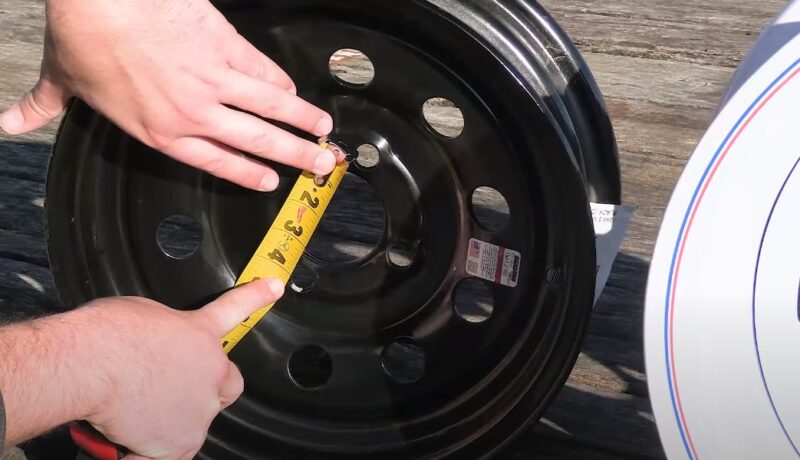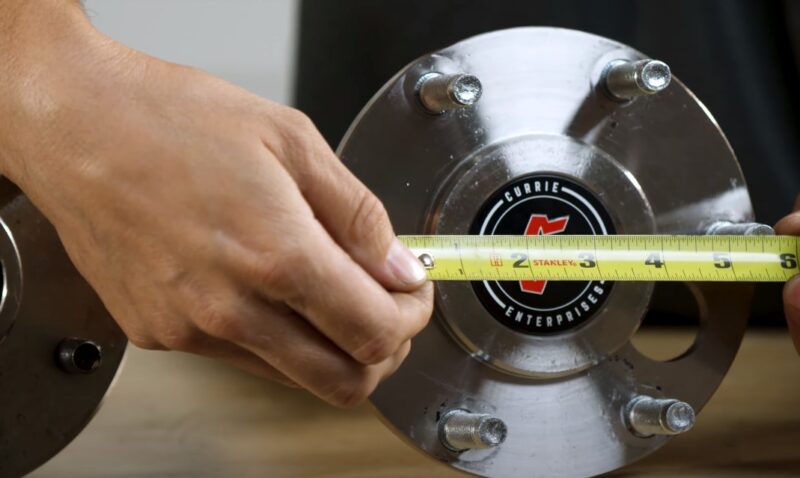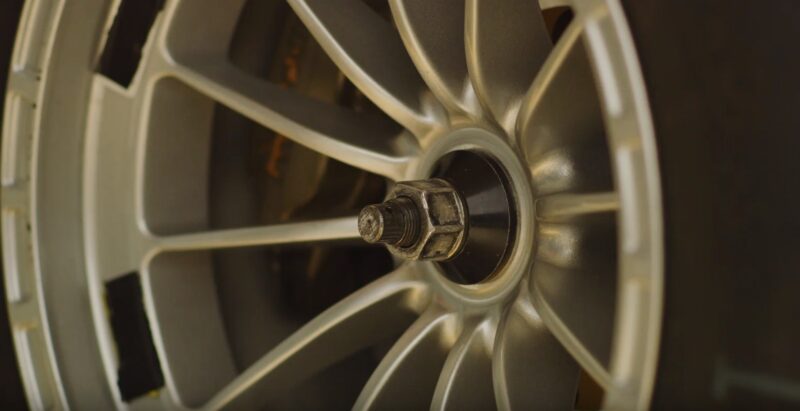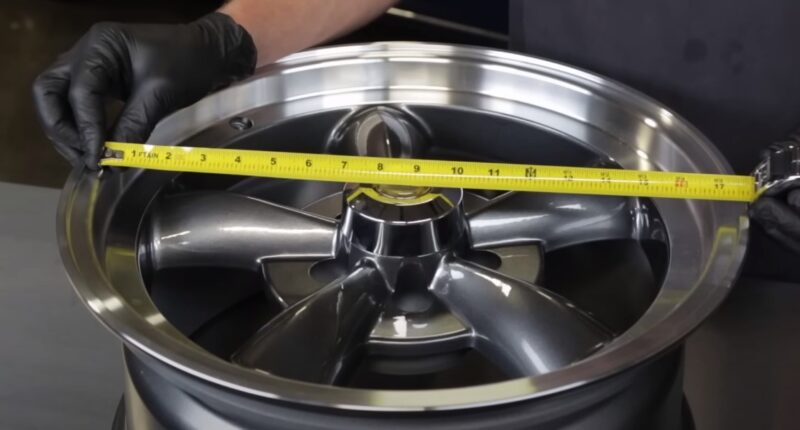Choosing the right wheels for your vehicle involves more than just style and material – the wheel bolt pattern is crucial for a proper fit. A wheel bolt pattern is a specific arrangement of the bolt holes on a wheel.
This pattern must align precisely with the bolt studs on the vehicle’s hub. Understanding this pattern is crucial for selecting the right wheels for your vehicle.
Instructions for Taking Measurements
Measuring wheel bolt patterns accurately is crucial for ensuring the correct fitment of wheels on a vehicle. This process involves determining the number of lug holes (or bolts) on the wheel and precisely measuring the distance between them.
Essential Steps
- Identify the Number of Lugs: The first step is to count the number of lug holes on the wheel. This number will determine the method used for measurement.
- Clean the Wheel: Before measuring, ensure that the wheel and lug holes are clean of any dirt or debris that might affect accuracy.
- Gathering Tools: For measuring, you’ll need a ruler, a tape measure, or a caliper. A caliper is preferred for its precision.
Measuring Even Lug Patterns

- Measuring Point Selection: For an even lug pattern (like 4, 6, or 8 lugs), select one lug hole to start with.
- Direct Measurement: Measure the distance from the center of the chosen lug hole directly across to the center of the opposite hole.
- Recording the Measurement: This measurement is the diameter of an imaginary circle that could be drawn through all the lug holes. It should be recorded in inches or millimeters, depending on your preference or the standard in your region.
Measuring Odd Lug Patterns
- Starting Point: Choose any lug hole as your starting point.
- Measuring to an Adjacent Hole: Measure from the center of the starting lug to the outer edge of the lug hole directly next to it.
- Measuring Across the Wheel: Next, measure from the same starting lug to the outer edge of the lug hole directly across the wheel.
- Calculating the Diameter: The true bolt pattern diameter is found by averaging these two measurements. This average represents the diameter of an imaginary circle running through the lug holes.
Additional Tips
- Ensure Precision: When measuring, especially with a ruler or tape measure, ensure that your tool is perfectly centered in the lug hole.
- Double-Check Measurements: Always measure at least twice to ensure accuracy.
- Consider Professional Assistance: If you’re unsure about your measurements, consulting a professional can provide peace of mind and prevent costly mistakes.
Why Wheel Bolt Patterns Are Important?

A wheel bolt pattern is a specific arrangement of the bolt holes on a wheel. This pattern must align precisely with the bolt studs on the vehicle’s hub. Understanding this pattern is crucial for selecting the right wheels for your vehicle.
Significance of Accurate Measurement
Measuring a wheel bolt pattern accurately is not just a matter of ensuring that the wheel fits; it plays a significant role in various aspects of vehicle performance:
- Safety and Compatibility: The right bolt pattern ensures that the wheel is securely mounted to the vehicle. A mismatch can lead to wheels that are loosely fitted, potentially causing hazardous driving conditions.
- Vehicle Performance: Properly fitted wheels directly affect the vehicle’s handling, stability, and cornering ability. The correct bolt pattern ensures that the wheel is centered and balanced, providing a smoother driving experience.
- Avoiding Unnecessary Costs: Incorrect measurements can lead to purchasing wheels that don’t fit, resulting in wasted time and resources.
Types of Bolt Patterns and Their Measurement

Wheel bolt patterns are generally categorized into two types: even and odd lug arrangements. Understanding these types is crucial for accurate measurement:
- Even Lug Arrangements: Common configurations include 4, 6, or 8 lug patterns. To measure an even lug pattern, one typically measures from the center of one lug to the center of the lug directly opposite it. This measurement is straightforward and provides the diameter of an imaginary circle that crosses all the center points of the lugs.
- Odd Lug Arrangements: Patterns with 3, 5, or 7 lugs require a different approach. Since there is no directly opposite lug, the measurement is taken from the center of one lug to a point halfway between two lugs directly across from it. This process can be more complex, requiring more precision to ensure accuracy.
Variations
The automotive world is diverse, with various makes and models of vehicles, each having its unique specifications, including wheel bolt patterns. Here’s what you need to know:
- Makes and Models: Different vehicle manufacturers often use different bolt patterns. This variation means that wheels are not universally interchangeable between different vehicle brands or even different models within the same brand.
- Importance of Precise Fitment: A wheel’s bolt pattern must match the vehicle’s pattern exactly. Even a small discrepancy can lead to problems such as wheel misalignment, improper tire wear, and potential safety hazards.
- Customization and Modifications: Some vehicle owners opt for bolt pattern adapters to fit wheels with a different pattern. While this can broaden the range of wheel options, it’s essential to ensure that any modifications do not compromise the vehicle’s safety or handling.
Practical Applications

After accurately measuring the wheel bolt pattern, the next crucial step is applying this knowledge to select the right wheels for your vehicle.
Select the Right Wheels for Your Vehicle
The correct bolt pattern is just the starting point. Here are some additional factors to consider when selecting new wheels:
- Wheel Size and Fit: Apart from the bolt pattern, ensure the wheel’s size (diameter and width) is compatible with your vehicle. Incorrect wheel size can affect vehicle handling, speedometer accuracy, and overall aesthetics.
- Offset and Backspacing: The wheel’s offset and backspacing are crucial for proper fitment. These measurements determine how the wheel sits in the wheel well, affecting clearance and vehicle stance.
- Material and Style: Choose a wheel material (like alloy or steel) and style that suits your vehicle’s use and your personal preference. Remember, aesthetics are important, but functionality and safety should not be compromised.
Upgrading and Customizing Wheels
Customizing your vehicle with new wheels is a popular way to enhance its appearance and performance. However, it comes with its own set of challenges:
- Aftermarket Versus OEM Wheels: Aftermarket wheels offer more variety but may require more research to ensure compatibility. OEM (Original Equipment Manufacturer) wheels are a safer bet in terms of fitment but might offer limited styles.
- Customization Limits: Understand the limits of what your vehicle can safely accommodate in terms of wheel size and design. Overly large or wide wheels can lead to handling issues or even damage to the vehicle.
- Legal and Warranty Considerations: Be aware of any legal restrictions or warranty implications that may arise from modifying your vehicle with custom wheels.
FAQs
What is the bolt pattern for 5×120?
The 5×120 bolt pattern means there are five lug holes arranged in a circle that has a 120mm diameter. This pattern is commonly found in certain models of BMW, Chevrolet, Honda, and other brands.
What is the bolt pattern for 5×112?
A 5×112 bolt pattern indicates five lug holes in a pattern where the diameter of the circle formed by the lugs is 112mm. This pattern is typical in many Audi, Mercedes-Benz, and Volkswagen models.
Are all 5 bolt patterns the same?
No, not all 5 bolt patterns are the same. While they all have five lug holes, the diameter of the circle formed by these holes (the second number in the bolt pattern notation, like 5×120 or 5×112) can vary, making them different and specific to certain vehicle makes and models.
Will a 114.3 fit a 114?
In most cases, wheels with a bolt pattern of 114.3mm can fit on a vehicle with a 114mm bolt pattern hub. The 0.3mm difference is minimal and usually within the tolerance range for a secure fit. However, it’s always advisable to check with a professional for compatibility.
What cars run 5×114.3?
The 5×114.3 bolt pattern is one of the most common and is used by a wide range of vehicle manufacturers. It’s found in many models from Ford, Honda, Mazda, Nissan, Toyota, and more. This pattern is particularly prevalent in many Asian car brands.
Summary
Understanding and accurately measuring wheel bolt patterns is more than a technical task; it’s an essential part of vehicle maintenance and customization. By mastering this skill, vehicle owners can ensure their wheels are not only aesthetically pleasing but also safe and suitable for their specific vehicle model.
